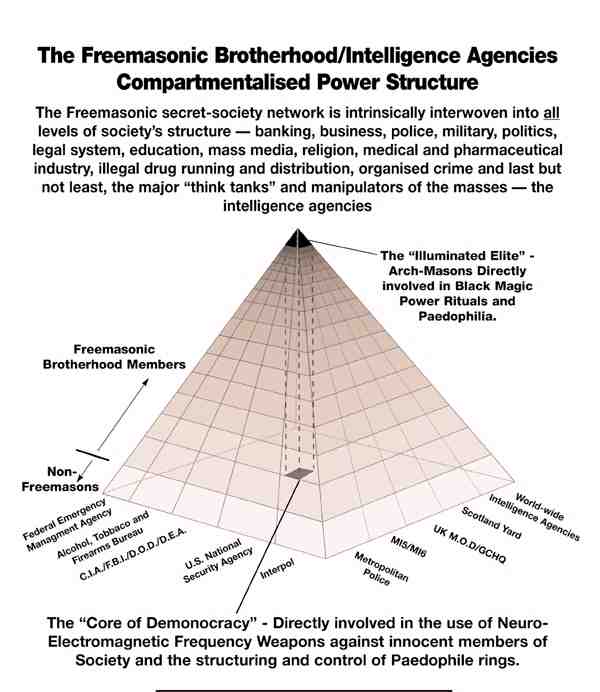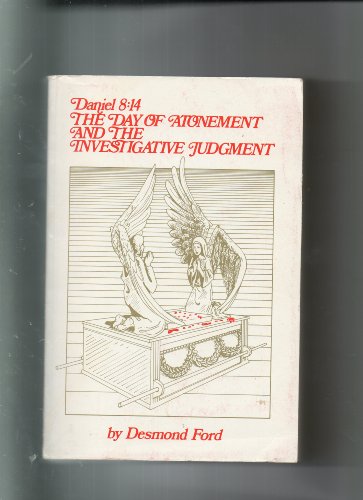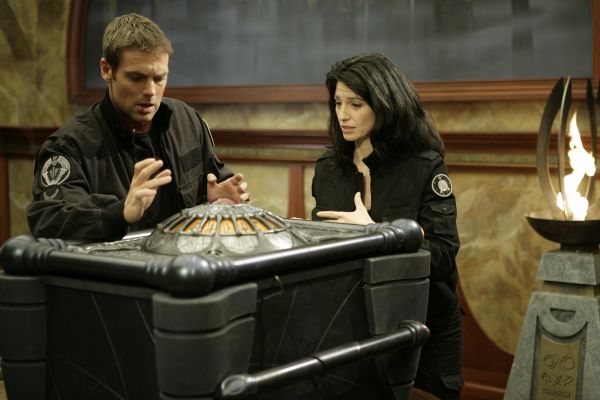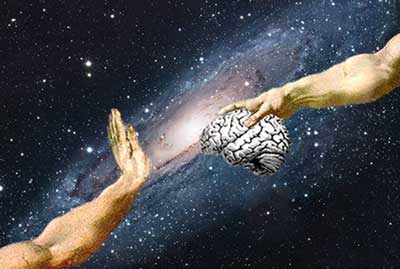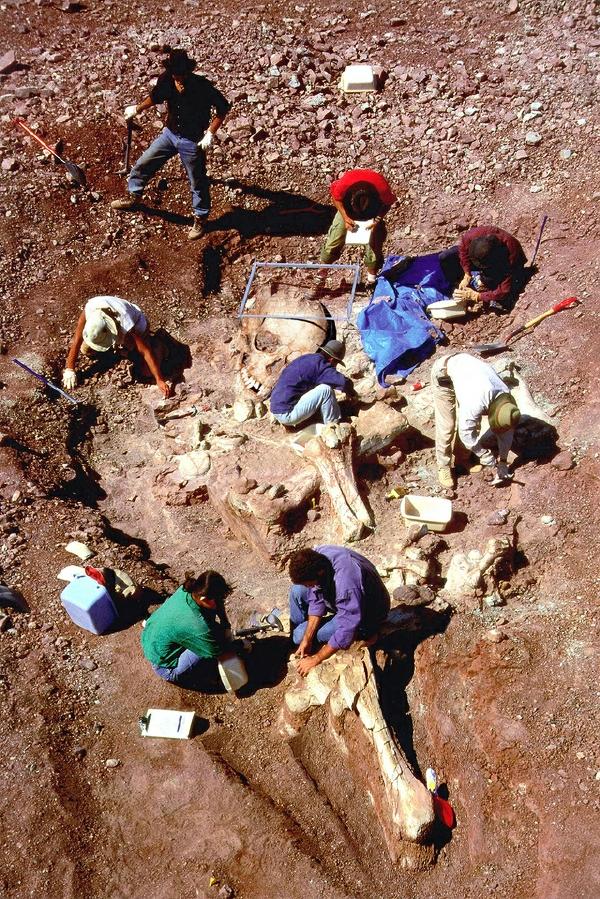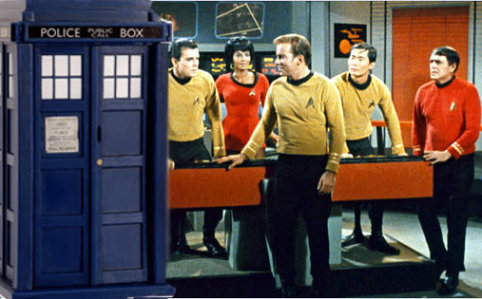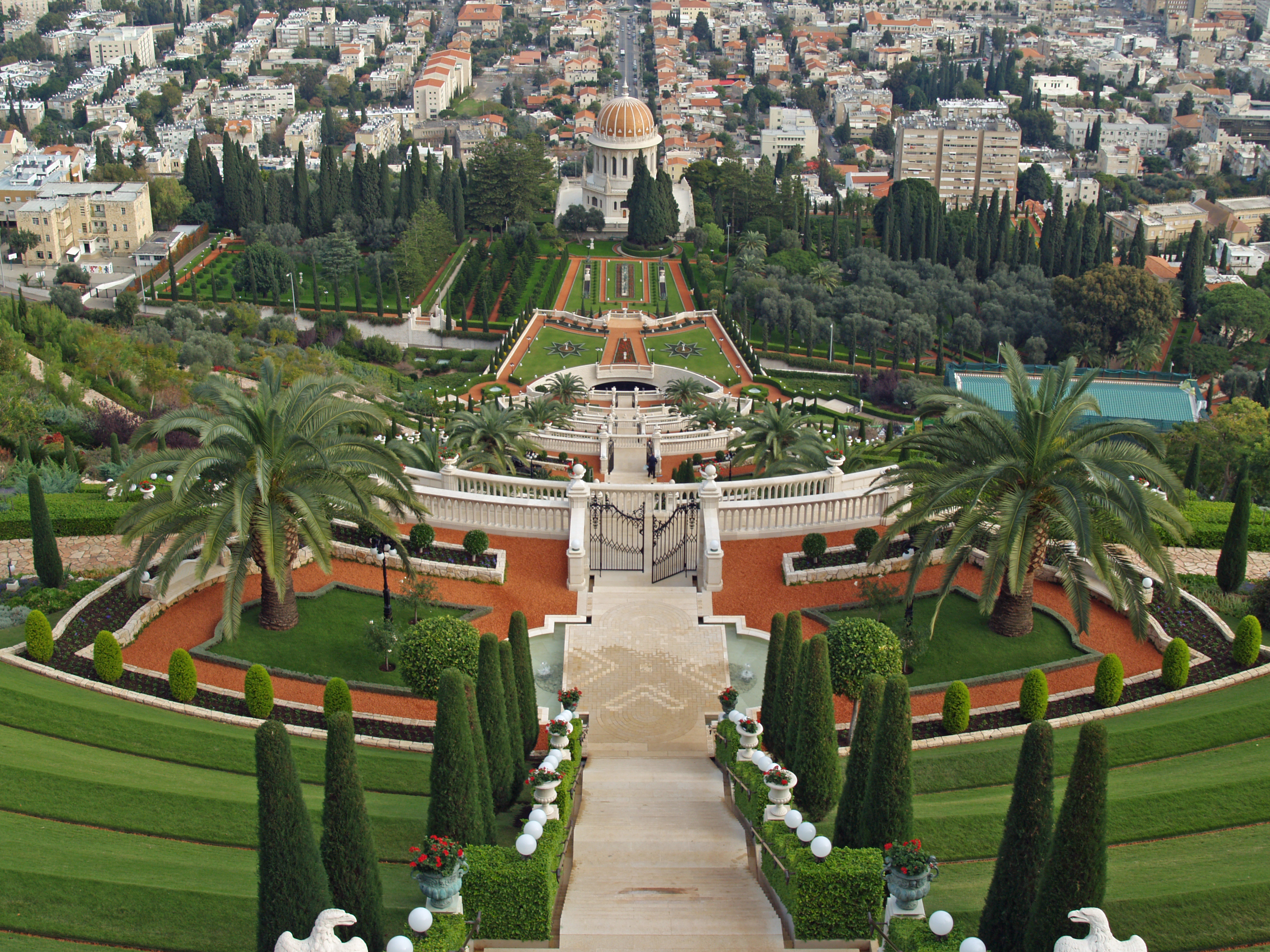My internet-posting is the product of curiosity, insecurity, confusion, concern, and misery. Ambition might figure into the equation -- but it's honestly NOT a priority in this particular incarnation -- but I don't know how things might've been in previous incarnations and other solar systems!! I'm extremely-apprehensive concerning my soul-history!! If I'm an Ancient ET Warrior (on a soul-basis) I might have a HUGE Amount of Karmic-Debt!! But what if there were no other reasonable options available at the time?? Would it make everyone happy if my Doctrinal-Statement were the following sources (in the context of the Whole-Bible and the Complete SDA Bible Commentary)??
1. 1 Chronicles to Ephesians ( New King James Version).
2. The SDA Bible Commentary -- Volumes 3, 4, 5, 6 (1 Chronicles to Ephesians).
3. Sacred Classical Music.
I keep thinking it might be cool to just live in a mountain-top 600 square-foot underground office-apartment with a powerful-computer and absolute-access InterPlaNet!! As always, I'm sort of joking, and sort of Sirius!! I'm simply attempting to make all of us think in unusual ways -- to solve unimaginable problems!! My insecurity, confusion, and misery are becoming worse and worse and worse. My concern is increasing -- while my curiosity is decreasing. I know that I don't know -- and the more I know, the more I know that I don't want to know!! You know?? What Would Noah Say??
Noah preached for 120 years, prior to the Flood. I have been speculating about A.D. 2133 (regarding the Possible End of the World -- as we know it). The movie Noah was released at the beginning of 2014 (approximately 120 years prior to A.D. 2133). December 21, 2012 was also approximately 120 years prior to A.D. 2133. The last Easter date in my 1928 Book of Common Prayer Easter-Table was in 2013 -- again approximately 120 years prior to A.D. 2133. The bulk of my internet-posting occurred approximately 120 years prior to A.D. 2133. The Ancient Egyptian Deity (and other Individuals of Interest) contacted me approximately 120 years prior to A.D. 2133. What is the meaning of this?? Damned if I know. "As it was in the days of Noah"?? Should anyone want the world to end?? Should anyone NOT want humanity to survive and thrive?? Is "I'm saved!!" triumphalism a good-thing?? Should the Saints "Praise the Lord" while the "Sinners Burn"?? As most of you know -- I'm a "Law and Order" kind of guy -- rather than a "Fire and Brimstone" sort of person -- but will good-intentions and catchy-phrases save the world and humanity?? Is attempting to save the world and humanity really "Rebellion Against God"?? Is "Sinners in the Hands of an Angry (and Jealous) God" a good-thing?? Will the Ten-Commandments be broken at the Second-Coming of Christ -- when the Commandment-Breakers are destroyed?? Think About It.
PART NINE - THE INMATES OF THE ARK
The ark was completed according to the instructions laid down in the Book of Raziel. Noah’s next task was gathering in the animals. No less than thirty-two species of birds and three hundred and sixty-five of reptiles he had to take along with him. But God ordered the animals to go to the ark, and they trooped there, and Noah did not have to do so much as stretch out a finger. Indeed, more appeared than were required to come, and God instructed him to sit at the door of the ark and note which of the animals lay down as they reached the entrance and which stood. The former belonged in the ark, but not the latter. Taking up his post as he had been commanded, Noah observed a lioness with her two cubs. All three beasts crouched. But the two young ones began to struggle with the mother, and she arose and stood up next to them. Then Noah led the two cubs into the ark. The wild beasts, and the cattle, and the birds which were not accepted, remained standing about the ark all of seven days, for the assembling of the animals happened one week before the flood began to descend. Many strange creatures, created by the fallen angel’s experiments of miscegenation, joined with the clean and unclean animals around the ark. Noah and his sons paid careful attention not to allow these abominations to enter.
On the day on which the animals came to the ark, the sun was darkened, and the foundations of the Earth trembled, and lightning flashed, and the thunder boomed as never before. And yet the sinners remained impenitent. In no way did they change their wicked doings during those last seven days. During this time, the laws of nature were suspended, the sun rose in the west and set in the east. Noah saw the Earth had tilted and that its destruction was near. From the disturbance of the waters came the smell of burning sulfur and rivers of fire flowed from the valleys. The temperature of the springs changed, and places on the Earth that were once cold, became warm, and places that were once warm, became cold. Even the firmament itself appeared to be melting. When finally the flood broke loose, seven hundred thousand of the children of men gathered around the ark, and begged Noah to grant them protection. With a loud voice he replied, and said: “Are you not those who were rebellious toward God, saying, ‘There is no God’? Therefore He has brought ruin upon you, to annihilate you and destroy you from the face of the Earth. Have I not been prophesying this to you these hundred and twenty years, and you would not pay attention to the voice of God? Yet now you desire to be kept alive!”
Then the sinners cried out: “So be it! We all are ready now to turn back to God, if only you will open the door of your ark to receive us, that we may live and not die.” Noah made answer, and said: “That you do now, when your need presses hard upon you. Why did you not turn to God during all the hundred and twenty years which the Lord appointed to you as the term of repentance? Now do you come, and you speak like this, because distress troubles your lives. Therefore God will not listen to you and give you ear; you will accomplish nothing!” The crowd of sinners tried to take the entrance to the ark by storm, but the wild beasts and strange creatures keeping watch around the ark set upon them, and many were slain, while the rest escaped, only to meet death in the waters of the flood. The water alone could not have made an end of the giants, for they were giants in stature and strength. When Noah threatened them with the scourge of God, they would make reply: “If the waters of the flood come from above, they will never reach up to our necks; and if they come from below, the soles of our feet are large enough to dam up the springs.” But God commanded each drop to pass through Hell before it fell to Earth, and the hot rain scalded the skin of the sinners. The punishment that overtook them was fitting for their crime.
As their sensual desires had made them hot, and inflamed them to immoral excesses, so they were punished by means of heated water. Not even in the hour of the death struggle could the sinners suppress their vile instincts. When the water began to stream up out of the springs, they threw their little children into them, to choke the flood. It was by the grace of God, not because of his merits, that Noah found shelter in the ark before the overwhelming force of the waters. Although he was better than the others in his generation, he was yet not worthy of having wonders done for his sake. He had so little faith that he did not enter the ark until the waters had risen to his knees. With him his pious wife Naamah, the daughter of Enosh, escaped the peril, and his three sons, and the wives of his three sons.” Noah had not married until he was four hundred and ninety-eight years old. Then the Lord had bidden him to take a wife for himself. He had not desired to bring children into the world, seeing that they would all have to perish in the flood, and he had only three sons, born to him shortly before the deluge came. God had given him so small a number of offspring that he might be spared the necessity of building the ark on an overlarge scale incase they turned out to be pious. And if not, if they, too, were depraved like the rest of their generation, sorrow over their destruction would but be increased in proportion to their number.
As Noah and his family were the only ones not to have a share in the corruptness of the age, so the animals received into the ark were such as had led a natural life. For the animals of the time were as immoral as the men: the dog united with the wolf, the rooster with the pea-fowl, and many others paid no heed to sexual purity. Those that were saved were such ashad kept themselves untainted. Before the flood the number of unclean animals had been greater than the number of the clean. Afterward the ratio was reversed, because while seven pairs of clean animals were preserved in the ark, but two pairs of the unclean were preserved. One animal, the re’em, Noah could not take into the ark. Because of its size and uncontrollable wildness, it could not stay in there. Noah therefore tied it to the ark, and it ran on behind. Also, he would not make space for the giant Og. He sat on top of the ark securely, and escaped the flood of waters like this. Noah doled out his food to him daily, through a hole, because Og had promised that he and his descendants would serve him as slaves in perpetuity.
The assembling of the animals in the ark was but the smaller part of the task imposed upon Noah. His chief difficulty was to provide food for a year and accommodations for them. Long afterward Shem, the son of Noah, related to Eliezer, the servant of Abraham, the tale of their experiences with the animals in the ark. This is what he said: “We had sore troubles in the ark. The day animals had to be fed by day, and the night animals by night. My father did not know what food to give to the little zikta. Once he cut a pomegranate in half, and aworm dropped out of the fruit, and was devoured by the zikta. From then on, my father would knead bran, and let it stand until it bred worms, which were fed to the animal. The lion suffered with a fever all the time, and therefore he did not annoy the others, because he did not relish dry food. The difficulties were increased when the flood began to toss the ark from side to side. All inside of it were shaken up like lentils in a pot. The lions began to roar, the oxen lowed, the wolves howled, and all the animals gave vent to their agony, each through the sounds it had the power to utter. The men would often go for weeks without sleep. Also Noah and his sons, thinking that death was near, broke into tears. Noah prayed to God: “O Lord, help us, for we are not able to bear the evil that surrounds us. The waves surge about us, the streams of destruction make us afraid, and death stares us in the face. O hear our prayer, deliver us, incline Yourself to us, and be gracious to us! Redeem us and save us!”
The flood was produced by a union of the male waters, which are above the firmament, and the female waters issuing from the Earth. The upper waters rushed through the space left when God removed two stars out of the constellation Pleiades. Afterward, to put a stop to the flood, God had to transfer two stars from the constellation of the Bear to the constellation of the Pleiades. That is why the Bear runs after the Pleiades. She wants her two children back, but they will be restored to her only in the future world. There were other changes among the celestial spheres during the year of the flood. All the time it lasted, the sun and the moon shed no light, from where Noah was called by his name, “the resting one,” for in his life the sun and the moon rested. The ark was illuminated by a precious stone, the light of which was more brilliant by night than by day, so enabling Noah to distinguish between day and night. The duration of the flood was a whole year. It began on the seventeenth day of Heshwan, and the rain continued for forty days, until the twenty-seventh of Kislew.
The punishment corresponded to the crime of the sinful generation. They had led immoral lives, and fathered bastard children, whose embryonic state lasts forty days. From the twenty seventh of Kislew until the first of Siwan, a period of one hundred and fifty days, the water stood at one andthe same height, fifteen ells above the highest mountains. During that time all the wicked men and four hundred and nine thousand giants were destroyed, each one receiving the punishment due to him. So powerful were the waters in working havoc that the corpse of Adam was not spared in its grave.Maintaining the animals consumed much of the men’s time. Removing the refuse, feeding the animals, and maintaining their own bodies left little time for entertainment. When sleep would not come to the men, the brothers would carve the name of a prophet on a plank of the ark until on every plank was the name of a prophet. Other times they would sing the songs of the sage, for protection against the evil spirits of the bastard giants. On the first of Siwan the waters began to abate, a quarter of an ell a day, and at the end of sixty days, on the tenth day of Ab, the summits of the mountains showed themselves. But many days before, on the tenth of Tammuz, Noah had sent out the raven, and a week later the dove, on the first of her three sallies, repeated at intervals of a week.
It took from the first of Ab until the first of Tishri for the waters to subside completely from the face of the Earth. Even then the soil was so muddy that the dwellers in the ark had to remain within until the twenty-seventh day of Heshwan, completing a full sun year, consisting of twelve moons and eleven days. When the supply of food began to decrease, it was the giant Og who would do without, not the men. One day Og began to protest, “I sit upon this thing of boards and nails because I wish to live, not die! Do you not see how my figure has withered and my countenance has become weak?” Therefore, Noah doled out a piece of bread through the refuse hole and comforted him saying, “I believe the waters will abate soon, therefore you may eat!” Noah had experienced difficulty all along in determining the state of the waters and so he decided to dispatch the raven. The raven’s errand had no success, for when he saw the body of a dead man, he set to work to devour it, and did not execute the orders given to him by Noah. As a consequence of that, the dove was sent out. Toward evening she returned with an olive leaf in her bill, plucked upon the Mount of Olives at Jerusalem, for the Holy Land had not been ravaged by the deluge. As she plucked it, she said to God: “O Lord of the world, let my food be as bitter as the olive, but do You give it to me from Your hand, rather than it should be sweet, and I be delivered into the power of men.”
PART ELEVEN - NOAH LEAVES THE ARK
Though the Earth assumed its old form at the end of the year of punishment, Noah did not abandon the ark until he received the command of God to leave it. He said to himself, “As I entered the ark at the bidding of God, so I will leave it only at His bidding.” Yet, when God called Noah to go out of the ark, he refused, because he feared that after he lived upon the dry land for some time, and fathered children, God would bring another flood. He therefore would not leave the ark until God swore He would never visit the Earth with a flood again. When he stepped out from the ark into the open, he began to weep bitterly at sight of the enormous ravages done by the flood, and he said to God: “O Lord of the world! You are called the Merciful, and You should have had mercy upon Your creatures.” God answered, and said: “O you foolish shepherd, now you speak to Me. You did not so when I addressed kind words to you, saying: ‘I saw you as a righteous man and perfect in your generation, and I will bring the flood upon the Earth to destroy all flesh. Make an ark for yourself of gopherwood.’ I spoke to you like this, telling you all these circumstances, that you might ask mercy for the Earth. But you, as soon as you heard that you would be rescued in the ark, you did not concern yourself about the ruin that would strike the Earth. You merely built an ark for yourself, in which you were saved. Now that the Earth is wasted, you open your mouth to appeal and pray.”
Noah realized that he had been guilty of foolishness. To appease God and acknowledge his sin, he brought a sacrifice. God accepted the offering with favor, from where he is called by his name Noah. The sacrifice was not offered by Noah with his own hands; the priestly services connected with it were performed by his son Shem. There was a reason for this. One day in the ark Noah forgot to give his ration to the lion, and the hungry beast struck him so violent a blow with his paw that he was lame forever after, and, having a bodily defect, he was not permitted to do the offices of a priest. The sacrifices consisted of an ox, a sheep, a goat, two turtle doves, and two young pigeons. Noah had chosen these kinds because he supposed they were appointed for sacrifices, seeing that God had commanded him to take seven pairs of them into the ark with him. The altar was erected in the same place on which Adam, Cain and Abel had brought their sacrifices, and on which later the altar was to be in the sanctuary at Jerusalem. After the sacrifice was completed, God blessed Noah and his sons. He made them to be rulers of the world as Adam had been, and He gave them a command, saying, “Be fruitful and multiply upon the Earth,” for during their stay in the ark, the two sexes, of men and animals alike, had lived apart from each other, because while a public calamity rages, abstinence is becoming even to those who are left free from harm. This law of conduct had been violated by none in the ark except by Ham, by the dog, and by the raven. They all received a punishment. Ham’s was that his descendants were men of dark-hued skin. As a token that He would destroy the Earth no more, God set His bow in the cloud. Even if men should be excessive in sin again, the bow proclaims to them that their sins will cause no harm to the world. Times came in the course of the ages when men were pious enough not to have to live in dread of punishment. In such times the bow was not visible.
When the giant Og came down from the ark, he was ordered by Noah to stay with his son Shem. He would live a long life, exceeding five hundred years and be passed from Shem to his son Arphaxad, to his son Kainan, to his son Shelah, to his son Eber, to his son Peleg, to his son Reu, to his son Serug, to his son Nahor, to his son Terah, and eventually, to Abraham, who would set him free. God granted permission to Noah and his descendants to use the flesh of animals for food, which had been forbidden from the time of Adam until then. But they were to abstain from the use of blood. He ordained the seven Noachian laws, the observance of which is obligatory for all men, not upon Israel alone. God enjoined particularly the command against the shedding of human blood. Whoever sheds man’s blood, his blood would be shed. Even if human judges let the guilty man go free, his punishment would overtake him. He would die an unnatural death, such as he had inflicted upon his fellow-man. Yea, even beasts that slew men, even of them would the life of men be required.
PART TWELVE - THE CURSE OF DRUNKENNESS
Noah lost his title “the pious” when he began to occupy himself with the growing of the vine. He became a “man of the ground,” and this first attempt to produce wine at the same time produced the first to drink to excess, the first to utter curses upon his associates, and the first to introduce slavery. This is the way it all came about. Noah found the vine which Adam had taken with him from Paradise, when he was driven out. He tasted the grapes upon it, and, finding them savory, he resolved to plant the vine and tend it. On the very same day on which he planted it, it bore fruit, he put it in the wine-press, drew off the juice, drank it, became drunken, and was dishonored--all on one day. His assistant in the work of cultivating the vine was Satan, who had happened along at the very moment when he was engaged in planting the slip he had found. Satan asked him: “What is it you are planting here?” Noah answered, “A vineyard.” Satan inquired, “And what may be the qualities of what it produces?” Noah continued, “The fruit it bears is sweet, be it dry or moist. It yields wine that rejoices the heart of man.” Satan offered, “Let us go into partnership in this business of planting a vineyard.” “Agreed!” said Noah.
Satan at once slaughtered a lamb, and then, in succession, a lion, a pig, and a monkey. The blood of each as it was killed he made to flow under the vine. In this manner he conveyed to Noah what the qualities of wine are: before man drinks of it, he is innocent as a lamb; if he drinks of it moderately, he feels as strong as a lion; if he drinks more of it than he can bear, he resembles the pig; and if he drinks to the point of intoxication, then he behaves like a monkey, he dances around, sings, talks obscenely, and does not know what he is doing. This deterred Noah no more than did the example of Adam, whose fall had also been due to wine, for the forbidden fruit had been the grape, with which he had made himself drunk. In his drunken condition, Noah committed himself to the tent of his wife. His son Ham saw him there, and he told his brothers what he had noticed, and said: “The first man had but two sons, and one slew the other; this man Noah has three sons, yet he desires to father a fourth besides.” Nor did Ham rest satisfied with these disrespectful words against his father. He added to this sin of disrespect the still greater outrage of attempting to perform an operation upon his father designed to prevent procreation.
When Noah awoke from his wine and became sober, he pronounced a curse upon Ham in the person of his youngest son Canaan. To Ham himself he could do no harm, for God had conferred a blessing upon Noah and his three sons as they departed from the ark. Therefore he put the curse upon the last-born son of the son that had prevented him from fathering a younger son than the three he had.” The descendants of Ham through Canaan therefore have dark eyes, because Ham looked upon the nakedness of his father; they have misshapen lips, because Ham spoke with his lips to his brothers about the unseemly condition of his father; they have twisted curly hair, because Ham turned and twisted his head round to seethe nakedness of his father; and they go about naked, because Ham did not cover the nakedness of his father. In this manner, he was avenged, for it is the way of God to distribute punishment measure for measure. Canaan had to suffer as a substitute for his father’s sin. Yet some of the punishment was inflicted upon him on his own account, for it had been Canaan who had drawn the attention of Ham to Noah’s revolting condition. Ham, it appears, was but the worthy father of such a son. The last will and testament of Canaan addressed to his children read as follows: “Do not speak the truth; do not hold yourselves distant from theft; lead an immoral life; hate your master with an exceeding great hate; and love one another.” As Ham was made to suffer avengement for his disrespect, so Shem and Japheth received a reward for their respect, the unique way in which they took a garment and laid it upon both their shoulders, and walking backward, with averted faces, covered the nakedness of their father.
The naked the descendants of Ham, the Egyptians and Ethiopians, were led away captive and into exile by the king of Assyria, while the descendants of Shem, the Assyrians, even when the angel of the Lord burned them in the camp, were not exposed, their garments remained upon their corpses unsinged. And in times to come, when Gog will suffer his defeat, God will provide both shrouds and a place of burial for him and all his multitude, the descendants of Japheth. Though Shem and Japheth both showed themselves to be dutiful and respectful, it was Shem who deserved the larger compensation of praise. He was the first to set about covering his father. Japheth joined him after the good deed had begun. Therefore the descendants of Shem received as their special reward the tallit, the garment worn by them, while the Japhethites have only the toga. A further distinction accorded to Shem was the mention of his name in connection with God’s in the blessing of Noah. “Blessed be the Lord, the God of Shem,” he said, though as a rule the name of God is not joined to the name of a living person, only to the name of one who has departed this life. The relation of Shem to Japheth was expressed in the blessing their father pronounced upon them: God will grant a land of beauty to Japheth, and his sons will be new-comers dwelling in the academies of Shem. At the same time Noah conveyed by his words that the Shekinah would dwell only in the first Temple, erected by Solomon, a son of Shem, and not in the second Temple, the builder of which would be Cyrus, a descendant of Japheth.
PART THIRTEEN - NOAH’S DESCENDANTS SPREAD ABROAD
When it became known to Ham that his father had cursed him, he fled ashamed, and with his family he settled in the city built by him, and named Neelatamauk for his wife. Jealous of his brother, Japheth followed his example. He likewise built a city which he named for his wife, Adataneses. Shem was the only one of the sons of Noah who did not abandon him. In the vicinity of his father’s home, by the mountain, he built his city, to which he also gave his wife’s name, Zedeketelbab. The three cities are all near Mount Ararat, the high ground upon which the ark rested. The first lies to the south of it, the second to the west, and the third to the east. Noah strived to teach the laws and commands known to him upon his children and his children’s children. In particular he warned them against the fornication, the uncleanness, and all the iniquity which had brought the flood down upon the Earth. He criticized them with living apart from one another, and with their jealousies, for he feared that, after his death, they might go so far as to shed human blood. Against this he warned them impressively, that they are never annihilated from the Earth like those that went before. Another law which he enjoined upon them, to observe it, was the law ordaining that the fruit of a tree will not be used the first three years it bears, and even in the fourth year it will be the portion of the priests alone, after a part of it has been offered upon the altar of God. And having made an end of giving his teachings and injunctions, Noah said: “For in this manner Enoch, your ancestor, advised his son Methuselah, and Methuselah his son Lamech, and Lamech delivered all to me as his father had commanded him, and now I advise you, my children, as Enoch advised his son. When he lived, in his generation, which was the seventh generation of man, he commanded it and testified it to his children and his children’s children, until the day of his death.”
When Canaan grew, his father taught him writing, and he went to seek for himself a place where he might seize for himself a city. And he found a writing which former generations had carved on the rock, and he read what was on it, and he transcribed it and sinned owingto it; for it contained the teaching of the Watchers in accordance with which they used to observe the omens of the sun and moon and stars in all the signs of heaven. And he wrote it down and said nothing regarding it; for he was afraid to speak to Noah about it for fear that he should be angry with him because of it. In the 1,569th year after the creation of the world, Noah divided the Earth by lot among his three sons, in the presence of an angel. Each one stretched out his hand and took a slip from the bosom of Noah. Shem’s slip was inscribed with the middle of the Earth, and this portion became the inheritance of his descendants to all eternity. Noah rejoiced that the lot had been assigned to Shem. In this manner his blessing was fulfilled upon him, “And God in the habitation of Shem,” for three holy places fell within his precincts--the Holy of Holies in the Temple, Mount Sinai, the middle point of the desert, and Mount Zion, the middle point of the navel of the Earth.
The south fell to the lot of Ham, and the north became the inheritance of Japheth. The land of Ham is hot, Japheth’s cold, but Shem’s is neither hot nor cold, its temperature is hot and cold mixed. This division of the Earth took place toward the end of the life of Peleg, the name given to him by his father Eber, who, being a prophet, knew that the division of the Earth would take place in the time of his son. The brother of Peleg was called Joktan, because the duration of the life of man was shortened in his time. In turn, the three sons of Noah, while they were still standing in the presence of their father, divided each his portion among his children, Noah threatening with his curse any who should stretch out his hand to take a portion not assigned to him by lot. And they all cried, “So be it! So be it!”In this manner one hundred and four lands and ninety-nine islands were divided among seventy-two nations, each with a language of its own, using sixteen different sets of characters for writing. To Japheth, forty-four lands, thirty-three islands, twenty-two languages, and five kinds of writing were allotted; Ham received thirty-four lands, thirty-three islands, twenty-four languages, and five kinds of writing; and Shem twenty-six lands, thirty-three islands, twenty-six languages, and six kinds of writing--one set of written characters more to Shem than to either of his brothers, the extra set being the Hebrew.
The land appointed as the inheritance of the twelve sons of Jacob was provisionally granted to Canaan, Zidon, Heth, the Jebusites, the Amorites, the Girgashites, the Hivites, the Arkites, the Sinites, the Arvadites, the Zemarites, and the Hamathites. It was the duty of these nations to take care of the land until the rightful owners should come. No sooner had the children of Noah and their children’s children taken possession of the habitations apportioned to them, than the unclean spirits began to seduce men and torment them with pain and all sorts of suffering leading to spiritual and physical death. Upon the request of Noah, God sent down the angel Raphael, who banished all of the unclean spirits from the Earth. Upon which, Satan appeared to the very gates of heaven and petitioned God saying, “'Lord creator, leave some of them before me; let them listen to me and do everything that I tell them, because I alone am left of all the angels of heaven that fell and I cannot exist if I have no one to rule over! Then God said that nine-tenths should descend to the place of judgment, leaving but one-tenth for Satan, to punish sinners through them. Raphael, supported by the chief of the unclean spirits, at that time revealed to Noah all the remedies residing in plants, that he might resort to them at need. Noah recorded them in a book, which he transmitted to his son Shem. This is the source to which go back all the medical books from where the wise men of India, Aram, Macedonia, and Egypt draw their knowledge.
The sages of India devoted themselves particularly to the study of curative trees and spices; the Arameans were well versed in the knowledge of the properties of grains and seeds, and they translated the old medical books into their language. The wise men of Macedonia were the first to apply medical knowledge practically, while the Egyptians sought to effect cures by means of magic arts and by means of astrology, and they taught the Midrash of the Chaldees, composed by Kangar, the son of Ur, the son of Kesed. Medical skill spread further and further until the time of aesculapius. This Macedonian sage, accompanied by forty learned magicians, journeyed from country to country, until they came to the land beyond India, in the direction of Paradise. They hoped there to find some wood of the tree of life, and in this way their fame spread abroad over the whole world. Their hope was frustrated. When they arrived at the spot, they found healing trees and wood of the treeof life, but when they were in the act of stretching out their hands to gather what they desired, lightning darted out of the ever-turning sword, struck them to the ground, and they were all burned. With them disappeared all knowledge of medicine, and it did not revive until the time of the first Artaxerxes, under the Macedonian sage Hippocrates, Dioscorides of Baala, Galen of Caphtor, and the Hebrew Asaph.





http://en.wikipedia.org/wiki/Noah%27s_Flood The Genesis flood narrative comprises chapters 6–9 in the Book of Genesis, in the Bible.[1] The narrative, one of many flood myths found in human cultures, indicates that the God of Israel intended to return the Earth to its pre-Creation state of watery chaos by flooding the Earth for 370 days (the 150 days of flooding + the 220 days it took to dry up the floodwaters) because of humanity's misdeeds and then remake it using the microcosm of Noah's ark. Thus, the flood was no ordinary overflow but a reversal of creation.[2] The narrative discusses the evil of mankind that moved God to destroy the world by the way of the flood, the preparation of the ark for certain animals, Noah, and his family, and God's guarantee for the continued existence of life under the promise that he would never send another flood.[3]
Although scholarly consensus since the 19th century has been that the story cannot be literally true, some religious groups still fully embrace the story of the ark. Among other issues are the immense difficulties of explaining how housing, watering, feeding and caring for very large numbers of animals in a wooden ship smaller than many modern ships could be achieved. Additionally there are the problems of how the animals subsequently travelled to where they are now geographically found. For these and many other reasons the ark story is generally considered to be legend.[4][5][6][7]
David W. Cotter says that most exegetes feel the Genesis narrative is composed of two different stories that were combined into the final canonical form of Genesis 6–9.[8] Some scholars call these the Jahwist (YHWH) source and the Priestly (Elohim) source. Cotter lists some notable difficulties between the two sources: two different reasons are given for why the flood happens, Noah is given two different instructions about what animals and birds to take on board the ark, there are two different time frames given for how long the flood lasts, there are different explanations of the "nature of the flood waters", different circumstances by which Noah and the animals leave the ark, and two different "divine names" (elohim and Yahweh) are used.[8]
Barry L. Bandstra says that these are differences in characteristic style and vocabulary, and that overall they are not contradictory.[2] John Byron says that, where apparent contradictions do exist, they are not typically viewed as mistakes by Jewish scholars, but as allusions to deeper meanings. Even later interpreters have sought to discover the basic harmony that underlies the narrative, whether written by different authors, at different times, or within different cultures.[9]
The Genesis flood narrative is one of a number of similar flood myths. Many scholars believe that the Noah story and the Biblical Flood story are derived from the Mesopotamian versions, predominantly because Biblical mythology that is today found in Judaism, Christianity, Islam and Mandeanism shares overlapping consistency with far older written Mesopotamian stories of The Great Flood, and that some of the early Hebrews were believed to have lived in Mesopotamia,[10] for example during the Babylonian captivity. The earliest written flood myth is the Sumerian flood myth found in the 'Epic of Ziusudra’.[11] Later and very similar Mesopotamian flood stories are found in the Epic of Atrahasis and Epic of Gilgamesh texts.
The Masoretic text of the Torah, or Pentateuch, places the Great Deluge 1,656 years after Creation, or 1656 AM (Anno Mundi, "Year of the World"). Many attempts have been made to place this time-span to a specific date in history.[12] At the turn of the 17th century, Joseph Scaliger placed Creation at 3950 BC, Petavius calculated 3982 BC,[13][14] and according to James Ussher's Ussher chronology, Creation took place in 4004 BC, dating the Great Deluge to 2348 BC.[15]
The development of scientific geology had a profound impact on attitudes towards the biblical Flood narrative. Without the support of the Biblical chronology, which placed the Creation and the Flood in a history which stretched back no more than a few thousand years, the historicity of the ark itself was undermined. In 1823, William Buckland interpreted geological phenomena as Reliquiae Diluvianae: relics of the flood which "attested the action of a universal deluge". His views were supported by other English clergymen and naturalists at the time, including the influential Adam Sedgwick, but by 1830 Sedgwick considered that the evidence only showed local floods. The deposits were subsequently explained by Louis Agassiz as the results of glaciation.[16]
In 1862, William Thompson, later Lord Kelvin, calculated the age of the Earth at between 24 million and 400 million years, and for the remainder of the 19th century, discussion focused not on whether this theory of deep time was viable, but on the derivation of a more precise figure for the age of the Earth.[17] Lux Mundi, an 1889 volume of theological essays which is usually held to mark a stage in the acceptance of a more critical approach to scripture, took the stance that the gospels could be relied upon as completely historical, but that the earlier chapters of Genesis should not be taken literally.[18]
Genesis 6:1–4 presents the Sons of God marrying the daughters of men and siring a race of giants, the "mighty men that were of old, the men of renown." Genesis continues, "And the LORD saw that the wickedness of man was great in the earth, and that every imagination of the thoughts of his heart was only evil continually."[19] God decided to destroy what he had made and start again with the righteous Noah. God chose the flood as the instrument for destruction which is portrayed as a veritable reversal of creation.[20]
Beginning with Genesis 6:14, God gives instructions to Noah to build a waterproof vessel that would house his immediate family, along with a sample of animal life.[21] The vessel is an ark made of gopher wood covered in pitch inside and outside. The ark was to be 300 cubits long, 50 cubits wide, and 30 cubits high, and have an opening for daylight near the top, an entrance on its side, and three decks. God told Noah that he, his sons, his wife, his sons’ wives, and two of each kind of beast — male and female — would survive in the Ark (Genesis 6:1–22). Seven days before the Flood, God told Noah to enter the Ark with his household, and to take seven pairs of every clean animal and every bird, and one pair of every other animal, to keep their kind alive (Genesis 7:1–5).
The priestly (Elohim) source of Genesis 7:11;8:1-2 describes the nature of the flood waters as a cosmic cataclysm, by the opening of the springs of the deep and the floodgates, or windows, of heaven. This is the reverse of the separation of the waters recounted in the Genesis creation narrative of chapter 1. After Noah and the remnant of animals were secured, the fountains of the great deep and the floodgates, or windows, of the heavens were opened, causing rain to fall on the Earth for 40 days. The waters elevated, with the summits of the highest mountains under 15 cubits (22 feet 6 inches) of water, [21] flooding the world for 150 days, and then receding in 220 days.[22]
The Jahwist (YHWH) version of how the flood waters came to be, is indicated in Genesis 7:12 where it develops by way of a torrential downpour that lasts 40 days, then recedes in seven day periods.[22] During this time, the Ark came to rest on the mountains of Ararat where Noah opens the window and sends out a raven that went to and fro. Then he sends out a dove to see if the waters had decreased from the ground, but the dove could not find a resting place, and returned to the Ark. He waited another seven days, and again sent out the dove, and the dove came back toward evening with an olive leaf. He waited another seven days and sent out the dove, and it did not return. When Noah removed the covering of the Ark, he saw that the ground was drying. (Genesis 8:1–13)
God makes a pledge of commitment to Noah in Genesis 9:1–17. The priestly (Elohim) version takes the form of a covenant arrangement. This is the first explicit act of a covenant in the Hebrew Bible and is used seven times in this episode. God commits to continue both human and animal life and vows to never again use a second deluge against humanity. The covenant is sealed with the sign of a rainbow, after a storm, as a reminder.[23]
God blesses Noah and his sons using the same language as the priestly source of the Genesis creation narrative, "Be fruitful and increase and fill the earth."[24] Before the flood, animals and humans coexisted in a realm of peace only knowing a vegetarian diet. After the flood, God maintained that mankind would be in charge over the animals, granting that they may be eaten for food under the condition that their blood be removed.[25] God set these purity rules well before any transaction with Ancient Israel, effectively not confining such precedence solely to the Jewish faith.[26] Human life receives special divine sanction because humanity is in the image of Elohim.[27]
The Qu'ran states that Noah (Nu?) was inspired by the God in Islam, believed in the oneness of God, and preached Islam.[28] God commands Noah to build a ship. As he was building it, the chieftains passed him and mocked him. Upon its completion, the ship was loaded with only the animals in Noah's care[citation needed] as well as his immediate household,[29] along with 76 who did submit to God. The people who denied the message of Noah, including one of his own sons, drowned.[30] The final resting place of the ship was referred to as Mount Judi.[31]
According to the Yazidi Mishefa Res, two flood events occur. The first Deluge involved Noah and his family whose ark landed at a place called Ain Sifni in the region of Nineveh Plains, 40 kilometres (25 mi) north-east of Mosul. In the second flood, the Yazidi race was preserved in the person of Na'mi (or Na'umi), surnamed Malik Miran, who became the second founder of their race.[32] His ship was pierced by a rock as it floated above Mount Sinjar, but settled in the same location as it is in Islamic tradition, Mount Judi.[citation needed]
While some scholars have offered possible explanations for the origins of the flood myth including a legendary retelling of a possible Black Sea deluge, the general mythological exaggeration and implausibility of the story are widely recognized by relevant academic fields. The acknowledgement of this follows closely the development of understanding of the natural history and especially the geology and paleontology of the planet.
In Europe, the Renaissance saw much speculation on the nature of the ark that might have seemed familiar to early theologians such as Origen and Augustine. At the same time, however, a new class of scholarship arose, one which, while never questioning the literal truth of the Ark story, began to speculate on the practical workings of Noah's vessel from within a purely naturalistic framework. In the 15th century, Alfonso Tostada gave a detailed account of the logistics of the ark, down to arrangements for the disposal of dung and the circulation of fresh air. The 16th-century geometrician Johannes Buteo calculated the ship's internal dimensions, allowing room for Noah's grinding mills and smokeless ovens, a model widely adopted by other commentators.[34][incomplete short citation]
Various editions of the Encyclopædia Britannica reflect the collapse of belief in the historicity of the ark in the face of advancing scientific knowledge. Its 1771 edition offered the following as scientific evidence for the ark's size and capacity: "...Buteo and Kircher have proved geometrically, that, taking the common cubit as a foot and a half, the ark was abundantly sufficient for all the animals supposed to be lodged in it...the number of species of animals will be found much less than is generally imagined, not amounting to a hundred species of quadrupeds". By the eighth edition (1853–1860), the encyclopedia said of the Noah story, "The insuperable difficulties connected with the belief that all other existing species of animals were provided for in the ark are obviated by adopting the suggestion of Bishop Stillingfleet, approved by Matthew Poole...and others, that the Deluge did not extend beyond the region of the Earth then inhabited". By the ninth edition, in 1875, no attempt was made to reconcile the Noah story with scientific fact, and it was presented without comment. In the 1960 edition, the article on the ark stated that "Before the days of 'higher criticism' and the rise of the modern scientific views as to the origin of the species, there was much discussion among the learned, and many ingenious and curious theories were advanced, as to the number of animals on the ark".[4]
By the 17th century, it was becoming necessary to reconcile the exploration of the New World and increased awareness of the global distribution of species with the older belief that all life had sprung from a single point of origin on the slopes of Mount Ararat. The obvious answer was that man had spread over the continents following the destruction of the Tower of Babel and taken animals with him, yet some of the results seemed peculiar. In 1646, Sir Thomas Browne wondered why the natives of North America had taken rattlesnakes with them, but not horses: "How America abounded with Beasts of prey and noxious Animals, yet contained not in that necessary Creature, a Horse, is very strange".[34]
Browne, who was among the first to question the notion of spontaneous generation, was a medical doctor and amateur scientist making this observation in passing. However, biblical scholars of the time, such as Justus Lipsius (1547–1606) and Athanasius Kircher (c.1601–80), were also beginning to subject the Ark story to rigorous scrutiny as they attempted to harmonize the biblical account with the growing body of natural historical knowledge. The resulting hypotheses were an important impetus to the study of the geographical distribution of plants and animals, and indirectly spurred the emergence of biogeography in the 18th century. Natural historians began to draw connections between climates and the animals and plants adapted to them. One influential theory held that the biblical Ararat was striped with varying climatic zones, and as climate changed, the associated animals moved as well, eventually spreading to repopulate the globe.
There was also the problem of an ever-expanding number of known species: for Kircher and earlier natural historians, there was little problem finding room for all known animal species in the ark. Less than a century later, discoveries of new species made it increasingly difficult to justify a literal interpretation for the Ark story.[6] By the middle of the 18th century only a few natural historians accepted a literal interpretation of the narrative.[35]
References
1. Silverman, Jason (2013). Opening Heaven's Floodgates: The Genesis Flood Narrative, Its Context, and Reception. Gorgias Press.
2. Bandstra 2009, p. 61.
3. Cotter 2003, p. 49, 50.
4. All quotations from the article "Ark" in the 1960 Encyclopædia Britannica
5. Young 1995, p. History of the Collapse of "Flood Geology" and a Young Earth.
6. Browne 1983.
7. Ginzberg, Louis, 1909. The Legends of the Jews, vol. 1, pp. 145-169, Jewish Publication Society of America, Philadelphia. Reprinted as "Noah and the Flood in Jewish legend" in: Dundes, Alan (ed.), 1988. The Flood Myth, University of California Press, Berkeley and London, pp. 319-336.
8. Cotter 2003, p. 50.
9. Byron, John (2011). Cain and Abel in text and tradition : Jewish and Christian interpretations of the first sibling rivalry. Leiden: Brill Publishers. p. 5. ISBN 9789004192522.: References Kugel. HU Center for Jewish Studies, 2001, p. 18
10. Bottero (2001:21–22)
11. Bandstra 2009, p. 61, 62.
12. Timeline for the Flood. AiG, 9 March 2012. Retrieved 2012-04-24.
13. Barr 1984–85, 582.
14. Davis A. Young, Ralph F. Stearley, The Bible, Rocks, and Time: Geological Evidence for the Age of the Earth, p. 45.[1]
15. James Barr, 1984–85. "Why the World Was Created in 4004 BC: Archbishop Ussher and Biblical Chronology", Bulletin of the John Rylands University Library of Manchester 67:604 [2]
16. Herbert, Sandra (1991). "Charles Darwin as a prospective geological author". British Journal for the History of Science (24). pp. 171–174. Retrieved 2009-07-24.
17. Dalrymple 1991, pp. 14–17
18. James Barr (4 March 1987). "Biblical Chronology, Fact or Fiction?" (PDF). The Ethel M. Wood Lecture 1987 (University of London). p. 17. ISBN 978-0718708641. Retrieved 2010-08-08.
19. Genesis 6:5
20. Bandstra 2009, p. 59, 60.
21. Bandstra 2009, p. 62.
22. Bandstra 2009, p. 65.
23. Bandstra 2009, p. 65, 66.
24. Bandstra 2009, p. 66: Genesis 1:28
25. Blenkinsopp 2004, p. 45: Genesis 9:3–4
26. Blenkinsopp 2004, p. 45.
27. Bandstra 2009, p. 66: Genesis 9:6
28. Quran 4:163, Quran 26:105–107
29. Quran 11:35–41
30. Quran 7:64
31. Quran 11:44
32. Bulletin of the School of Oriental Studies, London Institution, Volume 2 (1921). University of London: School of Oriental Studies. Missing or empty |title= (help)
33. "Cameo with Noah's Ark". The Walters Art Museum.
34. Cohn 1996
35. Young 1995, p. History of the Collapse of "Flood Geology" and a Young Earth.
Bibliography
Bandstra, Barry L. (2009). Reading the Old Testament : an introduction to the Hebrew Bible (4th ed. ed.). Belmont, CA: Wadsworth/ Cengage Learning. pp. 59–66. ISBN 0495391050.Blenkinsopp, Joseph (2004). Treasures old and new : essays in the theology of the Pentateuch. Grand Rapids, Mich. [u.a.]: W.B. Eerdmans Pub. Co. p. 45. ISBN 0802826792.Cotter, David W. (2003). Genesis. Collegeville (Minn.): Liturgical press. pp. 49–64. ISBN 0814650406.
Further reading
Hamilton, Victor P (1990). The book of Genesis: chapters 1–17. Eerdmans.Kessler, Martin; Deurloo, Karel Adriaan (2004). A commentary on Genesis: the book of beginnings. Paulist Press.McKeown, James (2008). Genesis. Eerdmans.Rogerson, John William (1991). Genesis 1–11. T&T Clark.Sacks, Robert D (1990). A Commentary on the Book of Genesis. Edwin Mellen.Towner, Wayne Sibley (2001). Genesis. Westminster John Knox Press.Wenham, Gordon (2003). "Genesis". In James D. G. Dunn, John William Rogerson. Eerdmans Bible Commentary. Eerdmans.Whybray, R.N (2001). "Genesis". In John Barton. Oxford Bible Commentary. Oxford University Press.



RedEzra wrote:How come no government is talking about the elephant in the room named nazi flying saucer ? What is the reason for this silence ? Why do they not come clean about the fact that nazi Germany developed operational UFOs ? Anybody ? Why would the victors in WW II be silent about nazi flying saucers ? Well instead of telling it as it is that they are nazi tech... they are trying to make us believe that they are alien tech. Why ?
Last edited by orthodoxymoron on Sun Jun 24, 2018 12:11 pm; edited 1 time in total

















































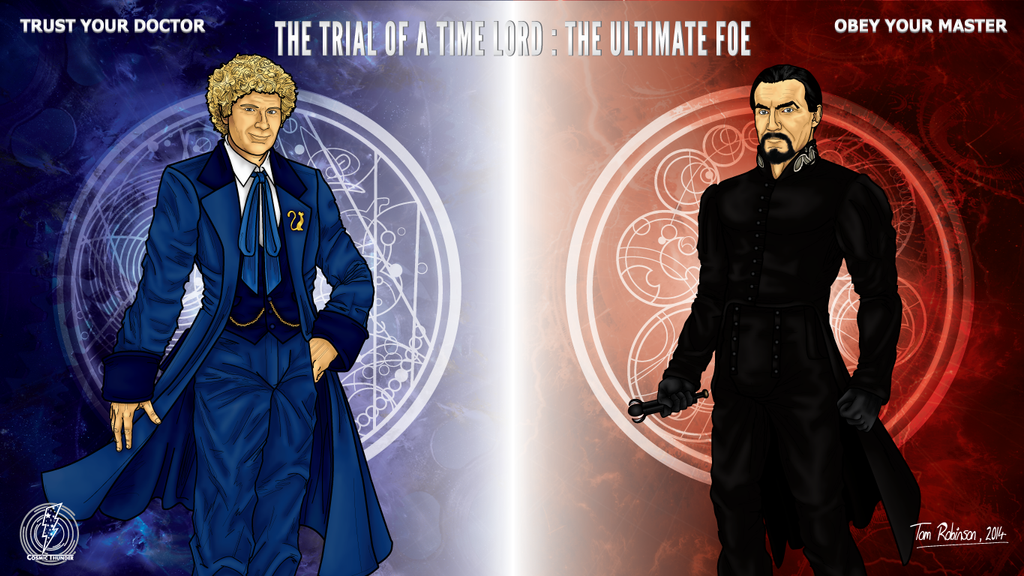



_01.jpg)



